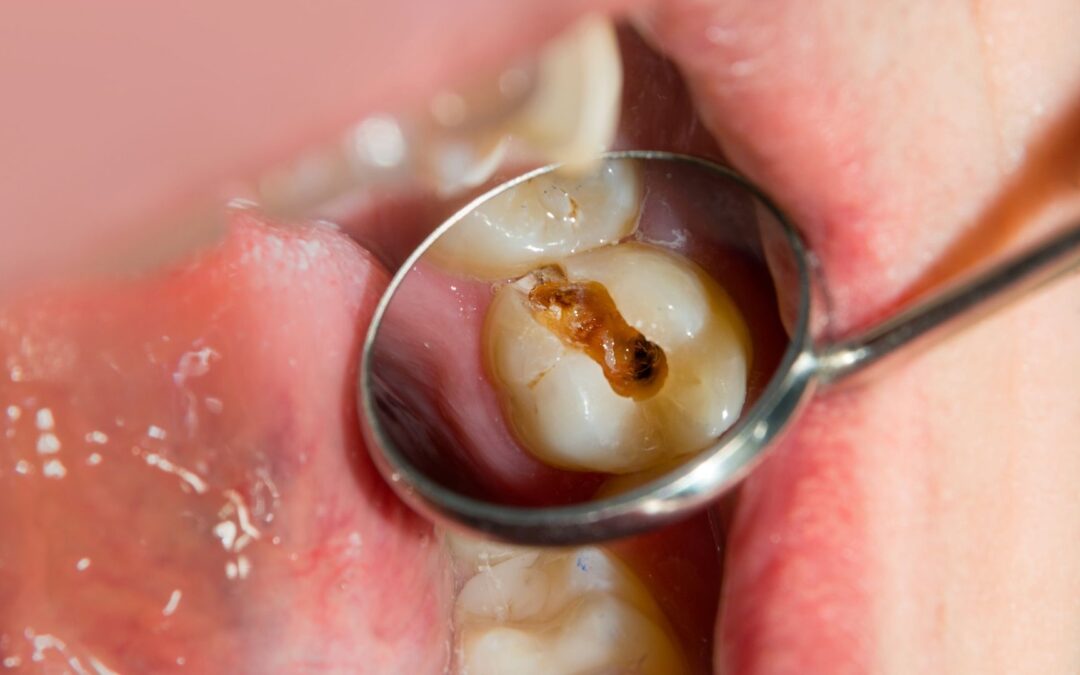Cavity might as well be a four-letter word! For as long as they have had a name, cavities have been a bad word. No one wants a cavity. Just thinking of a cavity may make you tense up and your teeth clench. However, tooth decay is second only to the common cold as the most common of all diseases. It affects 1 in 4 children ages 2-5, half of those age 12-15 and more than 90% of adults over 40.
The Power of the Cavity
Most of us understand cavities and we know how they are treated. Cavities, or caries, or tooth decay, are permanently damaged areas in the hard enamel surface of the teeth. They become tiny openings or holes into the tooth. They are caused by bacteria and microbes in the mouth form a sticky plaque on the teeth. One thing these microbes love more than anything is sugar. More sugar leads to more plaque. Plaque creates an acid that erodes the tooth and gum tissues. These acids eat away at the hard, protective outer layer of the tooth’s surface, the enamel. Once the enamel layer is damaged, the bacteria can infect and harm the gums, roots, nerves, and even the blood at the core of the tooth.
Treatment
The most common treatment for a cavity is a filling. The dentist wants to fill the hole that has been caused by the cavity. This involves several steps. The dentist will first give you a shot to numb the area. Once you are numb, it is safe to use the drill. This is the part that makes most of us cringe. The drill is used to remove all areas of damaged tooth so that the damage does not spread. Once the dentist sees only clean and healthy tooth, they will fill the opening with material such as tooth-colored composite resins, porcelain or dental amalgam that is a combination of several materials. Removing the infection and filling the hole protects the rest of the tooth and prevents spreading.
Prevention
Of course, the best treatment for a cavity is to prevent it in the first place. Proper dental hygiene makes a big difference. Brushing twice daily for 2 minutes with ADA approved fluoride toothpaste and toothbrush. Floss between the teeth at least once a day. Use an ADA approved mouthwash each day. Try to avoid sugary food and drink. Take time to at least rinse if not brush your teeth after eating especially sugary or sticky food or drink. See a dentist regularly for check ups and professional cleaning.
What If…
What is the worst that can happen? Treating a cavity is not a lot of fun, so what if I just let it go? Let’s explore what could actually happen to a cavity left untreated…
… Worse Decay
A cavity is a decayed tooth. It won’t go away on its own in fact, it will grow. The hole in your tooth will only get larger and deeper. It could grow so much that it creates a second cavity. You will have a weakened tooth that is more prone to becoming brittle and cracking and breaking.
… Nerve Damage
As tooth decay spreads and reaches deeper into the tooth, it will impact the soft tissue inside the tooth called the pulp. It will eventually reach the nerves. Your nerves become exposed to the air. This is extremely painful. Nerve pain is excruciating and ongoing. If the damage gets to this point, the only way to stop the pain is to go through the ordeal and cost of a root canal or to have the tooth extracted.
… Infection
Cavities are basically an infection in the tooth. That infection, as it grows in larger in the tooth, can spread beyond the tooth. The mouth and jaw could be infected. This can lead to increased pain, swelling, and other health concerns beyond just dental health. You will need an antibiotic to help fight the infection along side the treatment for the cavity.
… Illness
It could be hard to imagine, but what starts as a small hole in your tooth could become a serious illness. The same infection that can spread to the mouth and jaw can spread even farther. It can cause serious illness.
… Death
Of course, it is extremely rare, but an infection from a cavity could ultimately lead to death. This could happen within weeks or months as an untreated tooth infection spreads to other tissues in the body and lead to potentially life-threatening complications. Some possible complications include sepsis, Ludwig’s angina, necrotizing fasciitis, mediastinitis, endocarditis, cavernous sinus thrombosis, osteomyelitis, or a brain abscess. These are all huge medical names, but they are all “bad news.” For example, a deep infection in an upper back tooth could spread to the upper mouth, then to sinus, then behind the eye, and into the brain.
A word to the Wise
The most obvious signs that you have a cavity are the visible signs: puss or discharge around the teeth or a black or brown coloring. Another visible sign are small pits or holes inside of the tooth. Letting a cavity go can have a snowball effect. Treatment on a small cavity may be uncomfortable for a short time, but it is certainly more comfortable than some of these alternatives! At Danville Family Dentistry we will help you take the best care of your athlete’s oral health. Contact us today!
Are you on Facebook? We are, too! Let’s be friends!
Disclaimer: The information included in this article is for educational purposes only. It should not be used as a substitute for professional medical advice, diagnosis or treatment.


 (317) 745-4400
(317) 745-4400 info@danvilledentalcare.com
info@danvilledentalcare.com